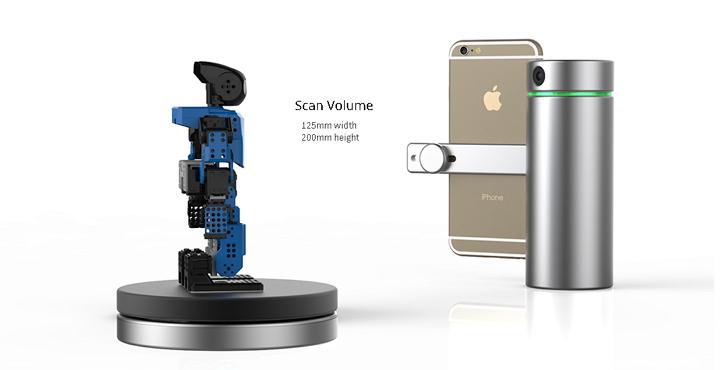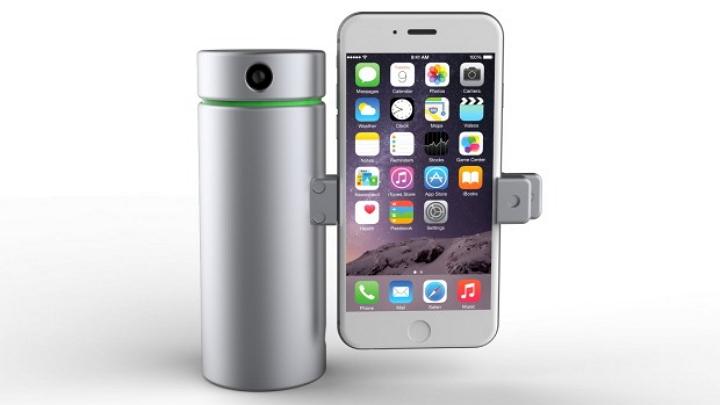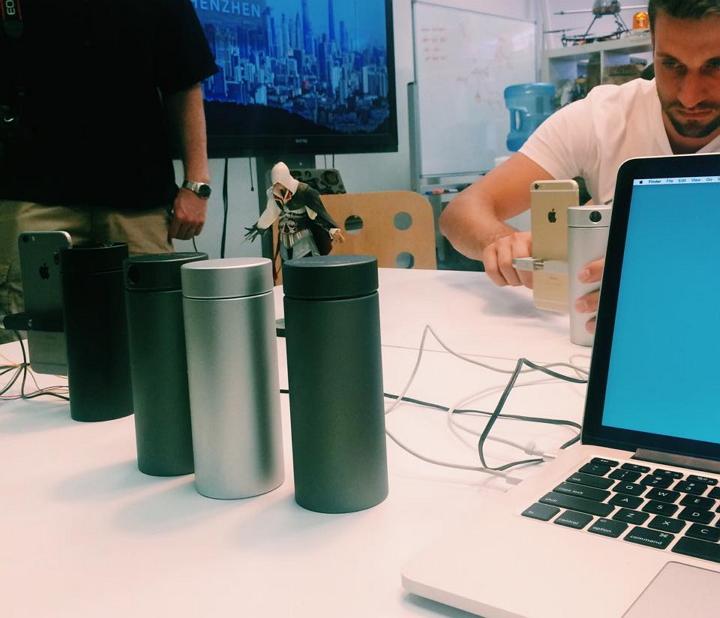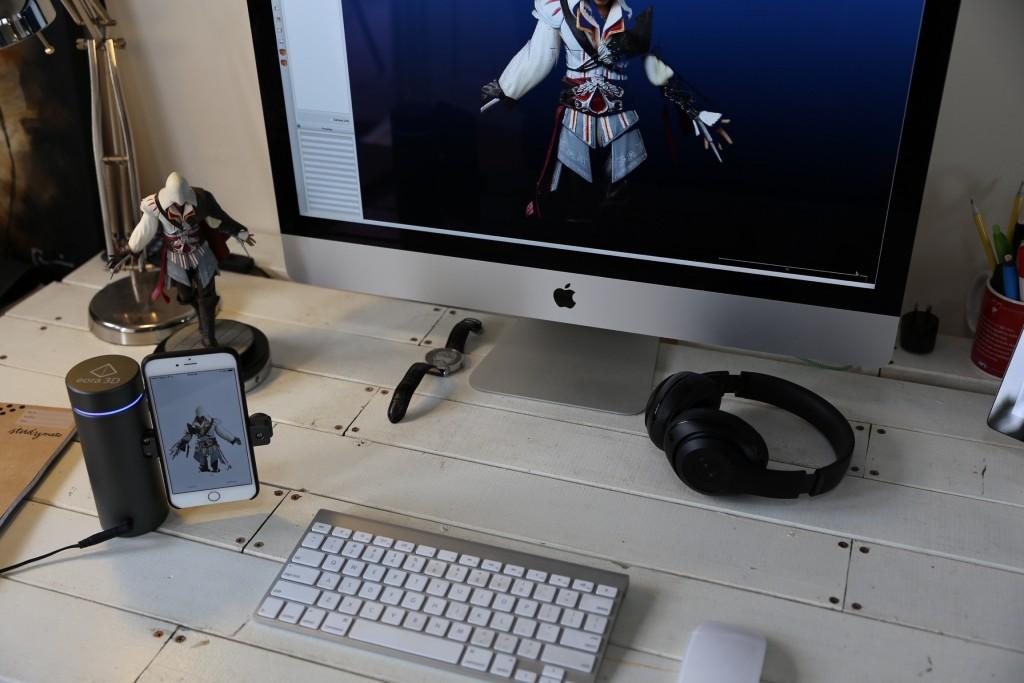 As they worked to verify some specifications on a parabolic dish solar energy project, the team at Eora 3D began researching what it would cost them to purchase their own 3D scanner. They were stunned when they checked out the price for the type of device they needed, so they decided to confront the problem head on and build their own.
As they worked to verify some specifications on a parabolic dish solar energy project, the team at Eora 3D began researching what it would cost them to purchase their own 3D scanner. They were stunned when they checked out the price for the type of device they needed, so they decided to confront the problem head on and build their own.
They say the discovery that the cheapest 3D Scanner which would meet their needs was priced around $20,000 pushed them to build their own iPhone-powered 3D laser scanner. The co-founders of Eora 3D, Rahul Koduri, Richard Boers and Asfand Khan, have now completed work on their device, and the result is a $199 3D laser scanner which is powered by any model iPhone 5 or 6. They say support for Android and Windows Phone devices is in the works as well.
Boers and Asfand Khan, have now completed work on their device, and the result is a $199 3D laser scanner which is powered by any model iPhone 5 or 6. They say support for Android and Windows Phone devices is in the works as well.
It’s a cylindrical scanner which projects a green laser beam across the surface of the object to be scanned, and as the beam sweeps across the object, the smartphone controls the laser and photographs several images per second while it tracks the laser and maps the contours of the object to create a point cloud.
“Our aim is precision because we’ve designed this for use with manufacturing,” Koduri says. “Studying the laser beam as it passes across the surface of an object is much more precise than simply using multiple cameras to create a 3D scan from photographs.”
According to Koduri, the process of analyzing the patter of the laser beam is more accurate than simply combining a series of images. The smartphone directs the path of the laser while photographing the object, and by capturing several images per second as it tracks the path of the laser, the Eora 3D scanner can build highly detailed files of the contours of scanned objects.
files of the contours of scanned objects.
By using a small Bluetooth-driven turntable, the device scans objects up to 200 millimeters tall in around five minutes. But the real strength of the Eora 3D scanner may be that it can also scan larger objects via a tripod mount.
“Unlike most 3D scanners, ours isn’t completely reliant on the turntable so you can point it at any object. It scans a one-meter square, and the great thing is that the software can automatically stitch multiple scans together – so you can scan pretty much anything, one section at a time from any angle, and still end up with a perfect 3D model. Just taking photos would be faster, but using a laser creates a much more precise colour 3D model with sub-100 micron accuracy,” Koduri says.
The team at Eora 3D says the development process for their scanner is complete, and they add that they’ve already selected manufacturers in China who can build the devices. The group plans to fund production of the scanners with a Kickstarter campaign set for a September launch, but they also plan to seek additional seed funding and manufacturing partners.
The partners are also finalists in the Seedstars World global startup competition, and that competition will hold finals in Geneva during March 2016.
Koduri says the Eora 3D is already working with a jewelry designer in Sydney and with 3D Printing Studios, an Australian 3D printing service, and that the studio is making the first versions of the scanner available to some customers.

Do you think an iPhone-driven 3D scanner like the Eora 3D would be useful in your 3D printing efforts? Let us know in the Eora 3D forum thread on 3DPB.com.
Subscribe to Our Email Newsletter
Stay up-to-date on all the latest news from the 3D printing industry and receive information and offers from third party vendors.
You May Also Like
3D Printed Heat Spreader Could Improve Efficiency of Electronics
The low-hanging fruit for decarbonization has long been improving the efficiency of existing systems, hence the justification for LED lights and ENERGY STAR certified appliances. While such minor moves are...
3D Printing News Unpeeled: Marine Gearboxes, 3D Printed Motors and $1.7 Million in Seed Funding
UK based Equipmake just released their Ampere-220 e-axle system. The system, which is meant for high performance electric cars, was similar to one released on the Ariel HIPERCAR. It has...
CEAD Unveils 36-Meter-Long 3D Printer for Abu Dhabi’s Al Seer Marine
CEAD, a Dutch original equipment manufacturer dedicated to large-format 3D printers, has unveiled what it claims to be the world’s largest robotic arm-based 3D printer. At 36 meters long and...
3D Printed Biocomposites Could Help Reduce Marine Plastic Pollution
Concerns about the impact of plastic litter and microplastics in the oceans are at the forefront of environmental study. For decades, the marine environment has suffered from the degradation of...




































